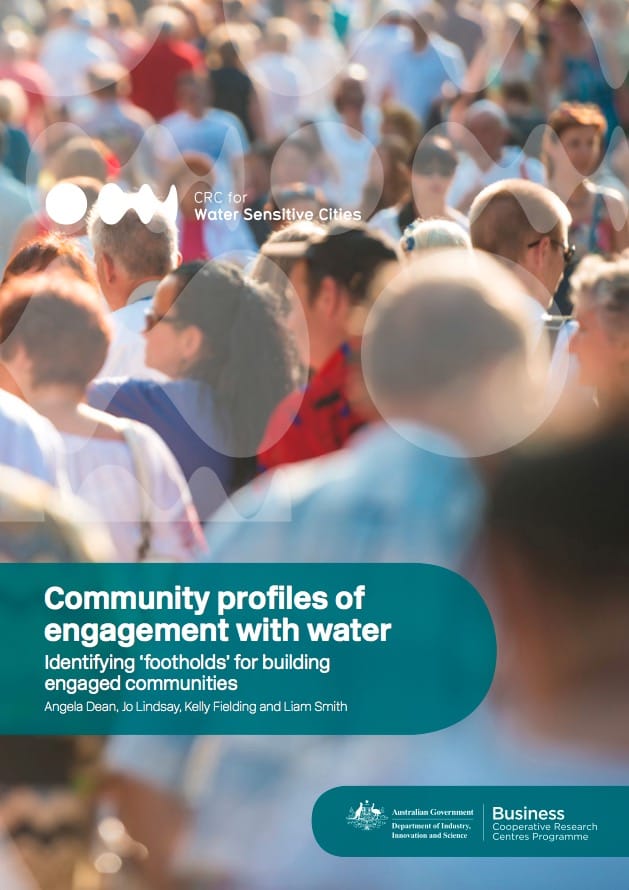Community profiles of engagement with water

The transition to water sensitive cities involves integrating investment, policy, and technological solutions to pursue water security and waterway protection (Brown and Farrelly 2009, Marlow et al. 2013, Vorosmarty et al. 2010). There is increased recognition that water management approaches need to consider not only technical and biophysical solutions to water scarcity and pollution, but also the socio-cultural context in which these solutions are implemented (Brown et al. 2009, Marks and Zadoroznyj 2005, Pahl-Wostl et al. 2013). Therefore, a critical element of transitioning to water sensitive cities is fostering an engaged citizenry – citizens that understand, value and actively support this transition, or what we term ‘water sensitive citizens’.
Five groups emerged from the data that differed on their engagement profile:
- ‘Disengaged’: this group exhibited low or very low scores for all engagement items.
- ‘Aware but inactive’: this group exhibited high scores for water-related knowledge and support for alternative water sources, but low scores for environmental identity and all behaviours.
- ‘Active but not engaged’: this was the largest of the five groups, comprising 31% of the sample. Despite reporting high scores for water-saving and pollution-reduction behaviours, this group exhibited low scores for cognitive and emotional engagement, and uptake of water-saving devices.
- ‘Engaged but cautious’: this group exhibited high or very high scores for all engagement indicators except for support for alternative water, which exhibited scores in the ‘low’ range.
- ‘Highly engaged’: this group exhibited high or very high scores on all engagement indicators.